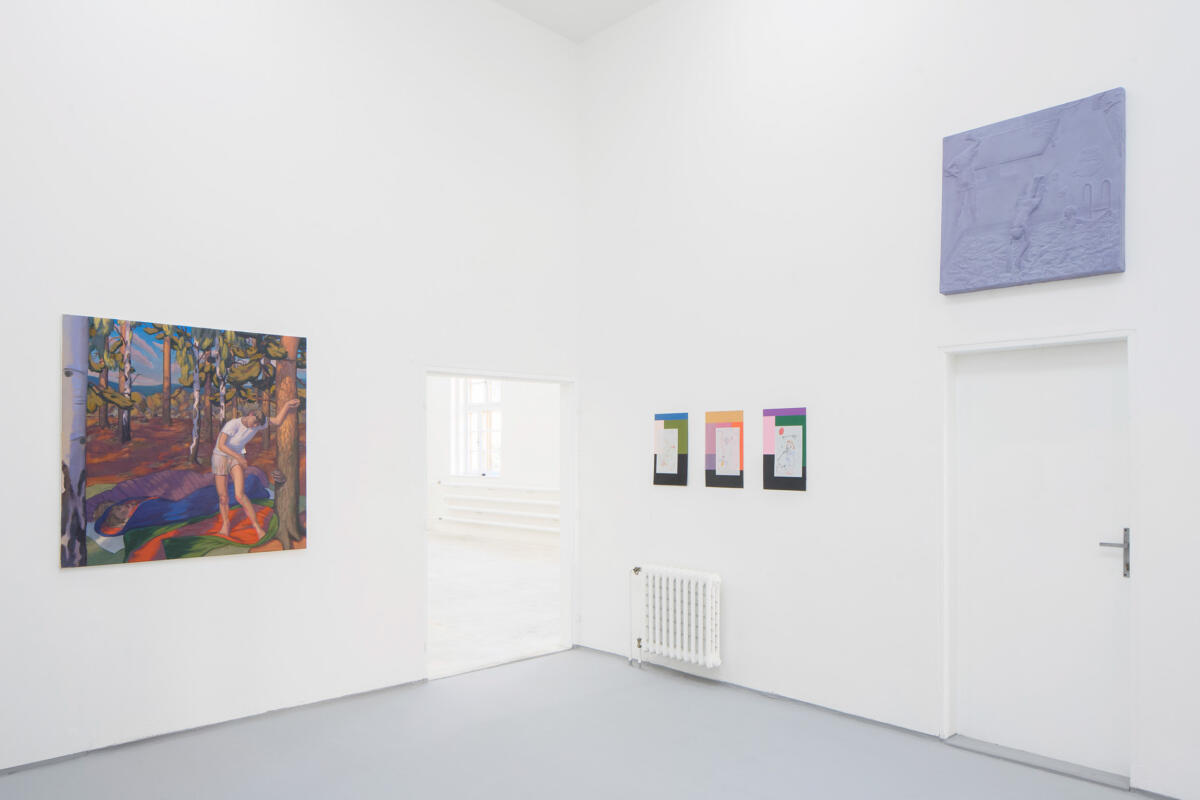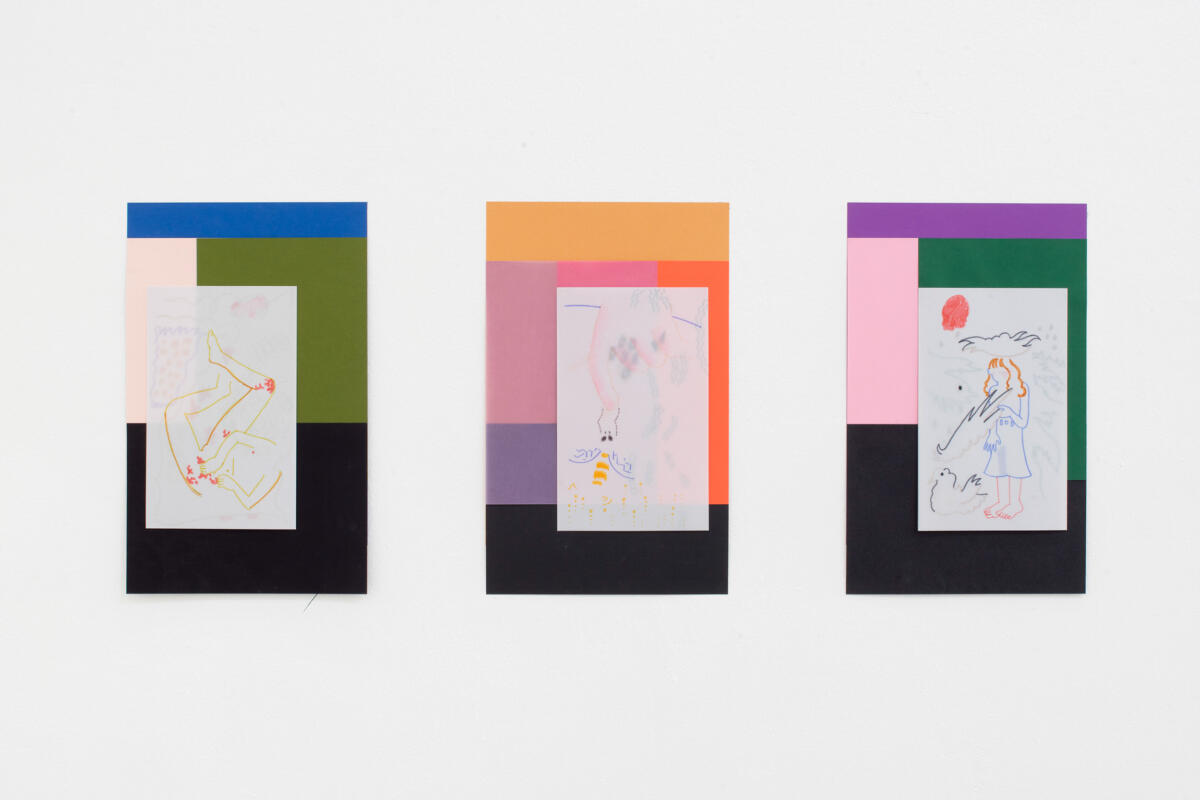![[EN/CZ] ‘Wasp in a Cup’ by Jan Kostohryz at Karlin Studios](https://blokmagazine.com/wp-content/uploads/2020/10/jan-kostohryz-vosa-v-kelimku-0145-1200x800.jpeg)
[EN]
text: Jiří Ptáček
It seems that Jan Kostohryz’s exhibition benefits from its timing at the end of summer, when more often than ever we point our face in the direction of Indian summer’s sun, now that the water in the river becomes inconveniently cold to swim in. If it had taken place a month earlier, it would have entered the streets of the city that grow hotter each year, where we count down the remaining time until skin cancer and the end of the world as we know it. On the contrary, in the winter, it would probably draw too much attention to itself in comparison to what awaits us outside. The luminance of its scenes featuring seemingly inactive youth – so envied by those who, in their own words, already have duties – as well as the nonconformity with which they stretch their flexible anatomies and shamelessly collapse them on whichever surface they please, are but pieces of memories when viewed from a late summer perspective – still alive and sharply sentimental.
We observe the idyllic image which Jan Kostohryz conjures on the curves of the bodies of the boys and girls depicted, as well as in the intoxicatingly easy undulation of markers on his drawings. Perhaps only the wasp sitting on the edge of a cup acts as an intruder – a tiny freckle on the beauty of portrayed pleasures. Maybe it acts as a symbol of the phantom that still pesters us in those precious moments which are otherwise unobstructed by everyday problems. The relief, which will be created during the exhibition as a gradually emerging detail of a kind of joyful fatigue – when again there is nothing better to do than to expose oneself to the sun’s reinvigorating glow – is represented in the exhibition from the beginning in the form of preparatory sketches. Alas, the wasp will certainly be somewhere, hidden and imperceptible, awaiting being drunk and digested.
Kostohryz’s reliefs absorbed the classical canon, which has permeated European history since antiquity in various rebirths and collective and individual revivals. That is why the temporal update that Kostohryz inserts into familiar templates has its counterpart in the tendency of a twofold escape outside of time. One of them seems to form a partial resemblance to a painting on an amphora in which Jason and his companions are laying on the deck of the Argo ship after bathing in the warm sea, reclining in the pleasant breeze. If any such object exists. The second stems from the very nature of the activities that boys and girls perform, which are considered a mere pause between more practical activities. After all, the word ‘vacation’ alludes to vacancy, hollowness, a non-time that is clearly separate from work-time, the time of tasks and high performance, and nowadays is only available to those who haven’t ostentatiously grown into adults yet.
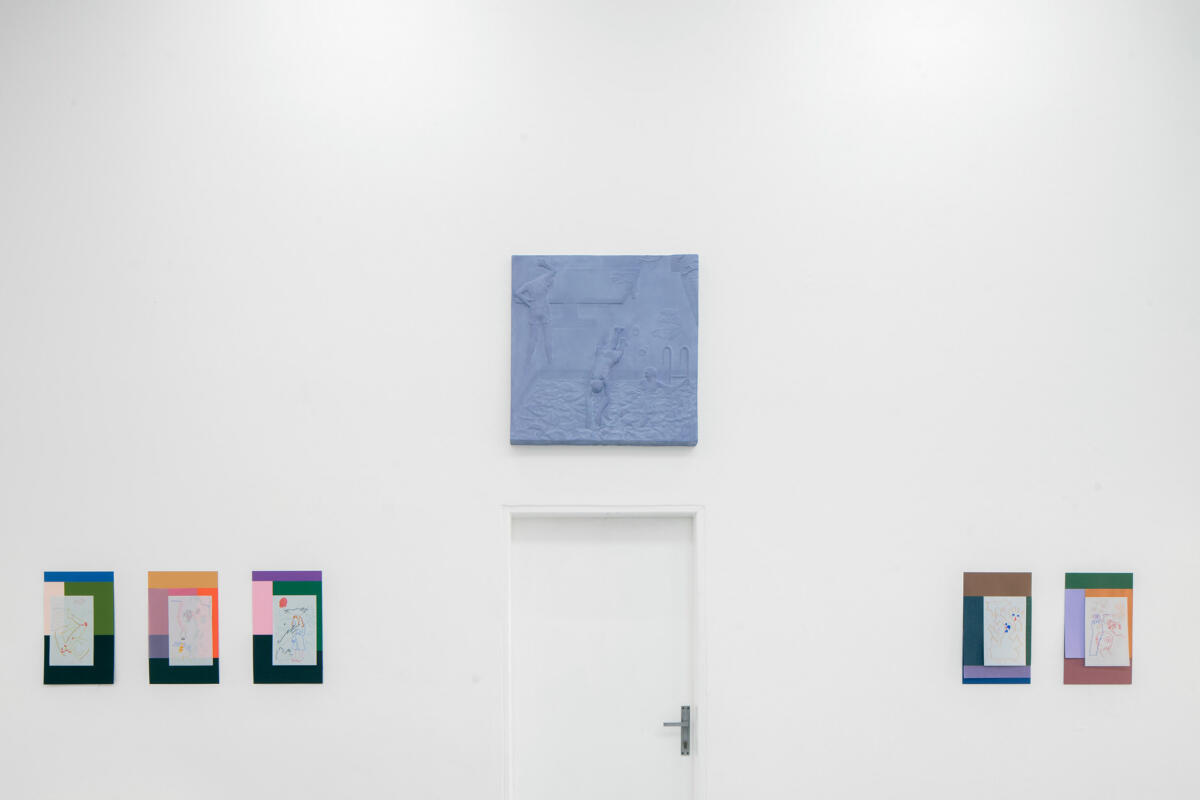
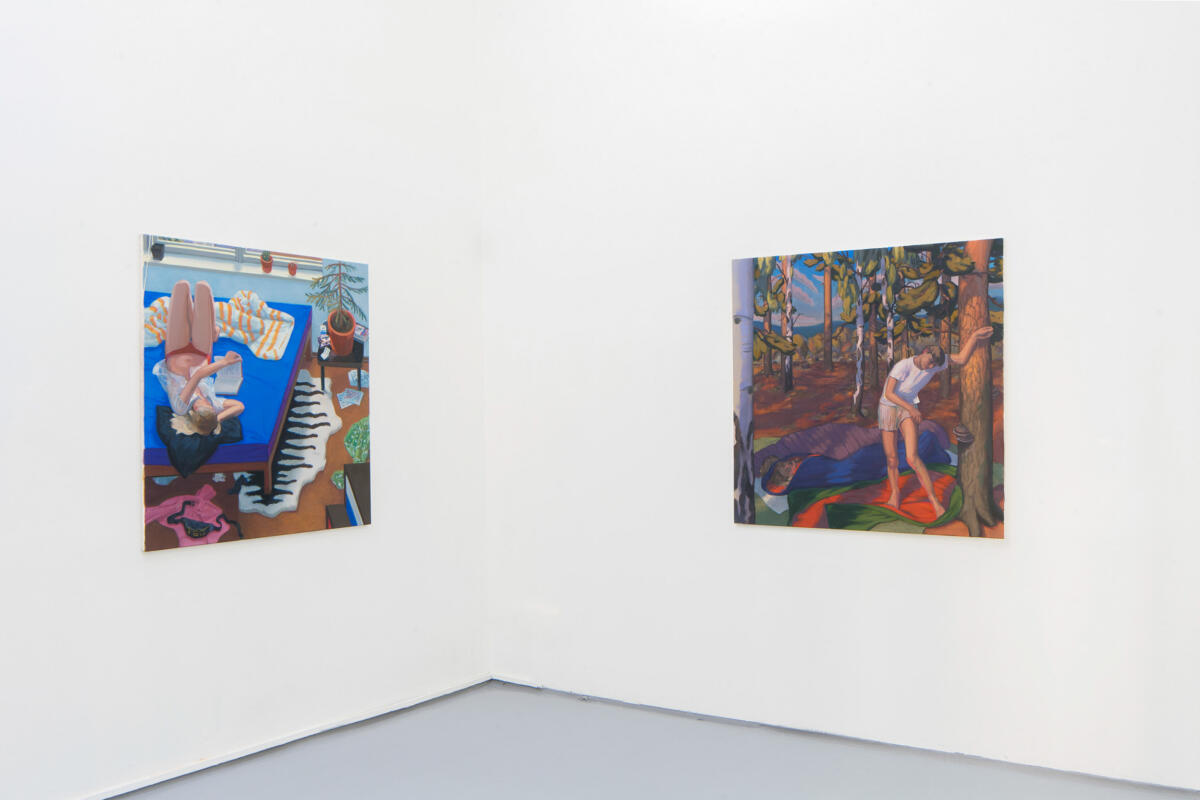
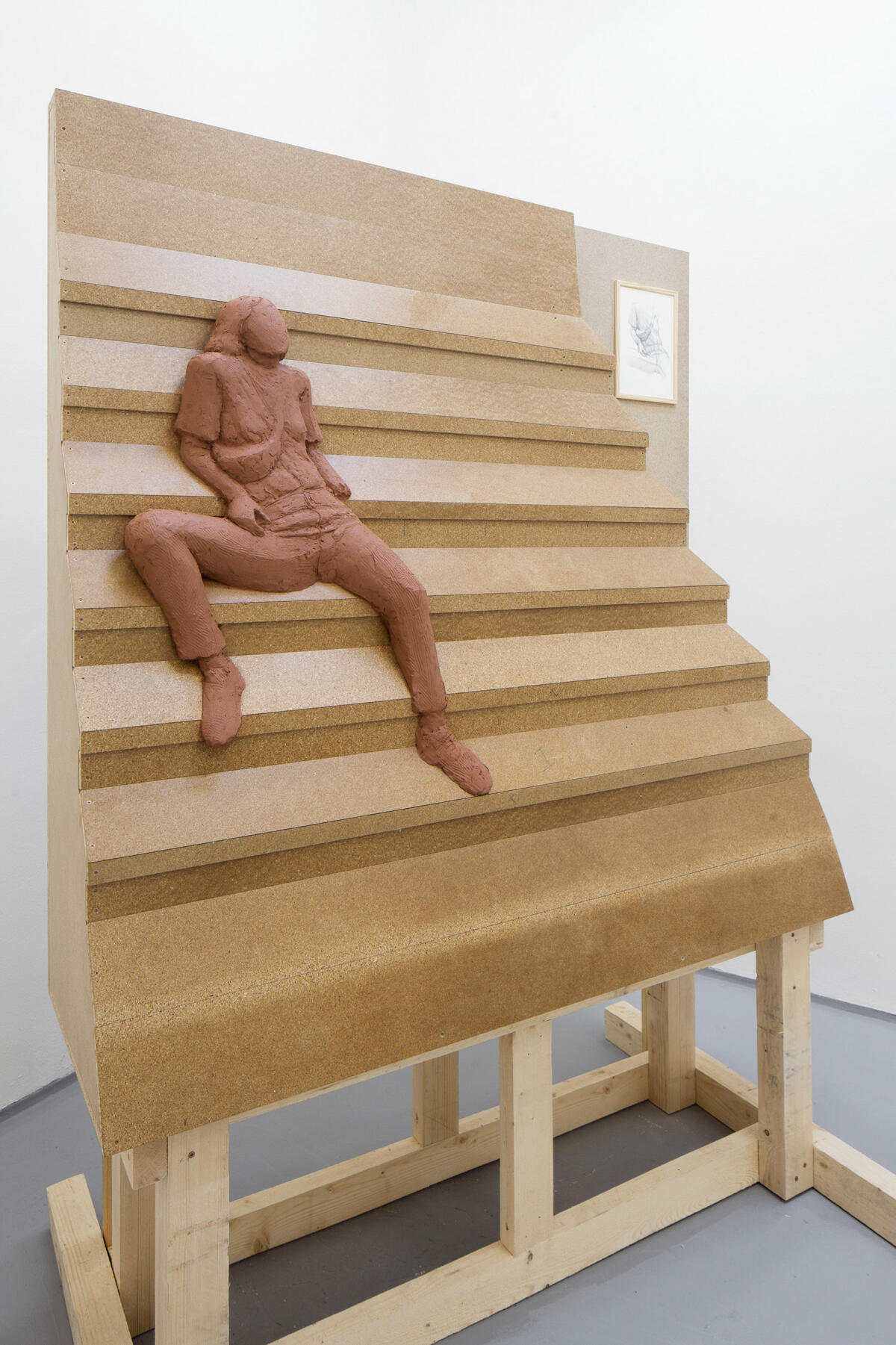
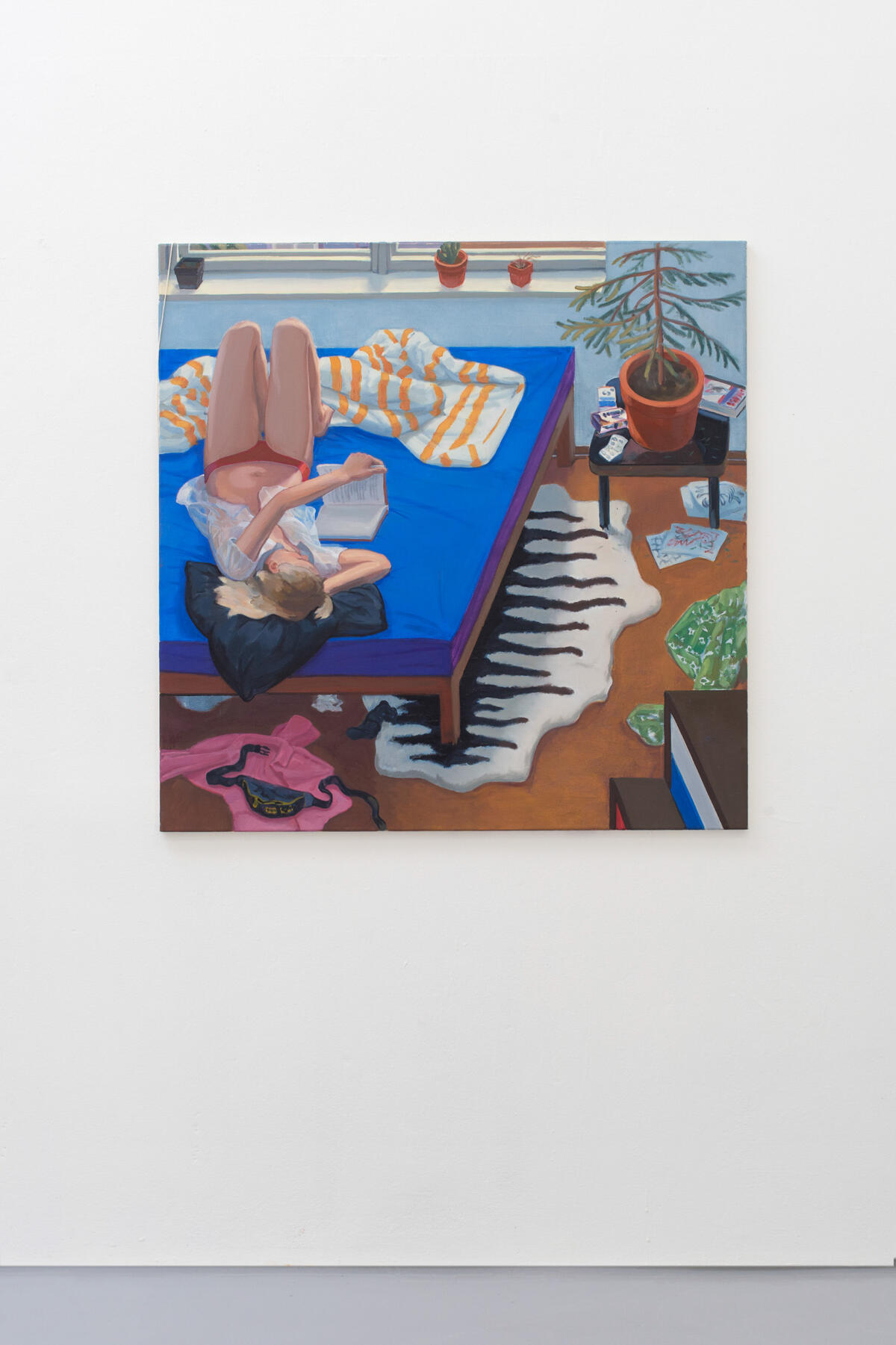
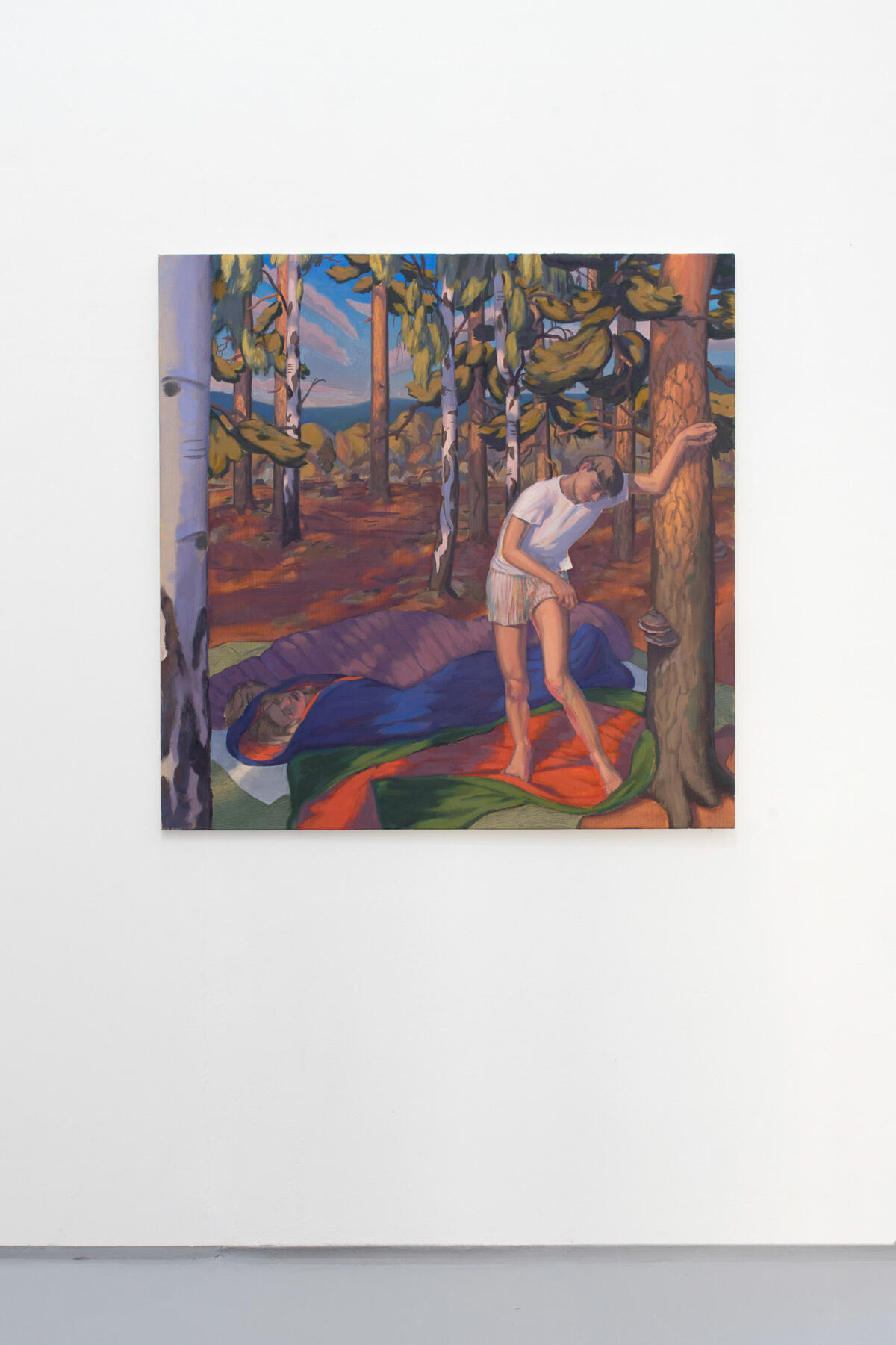
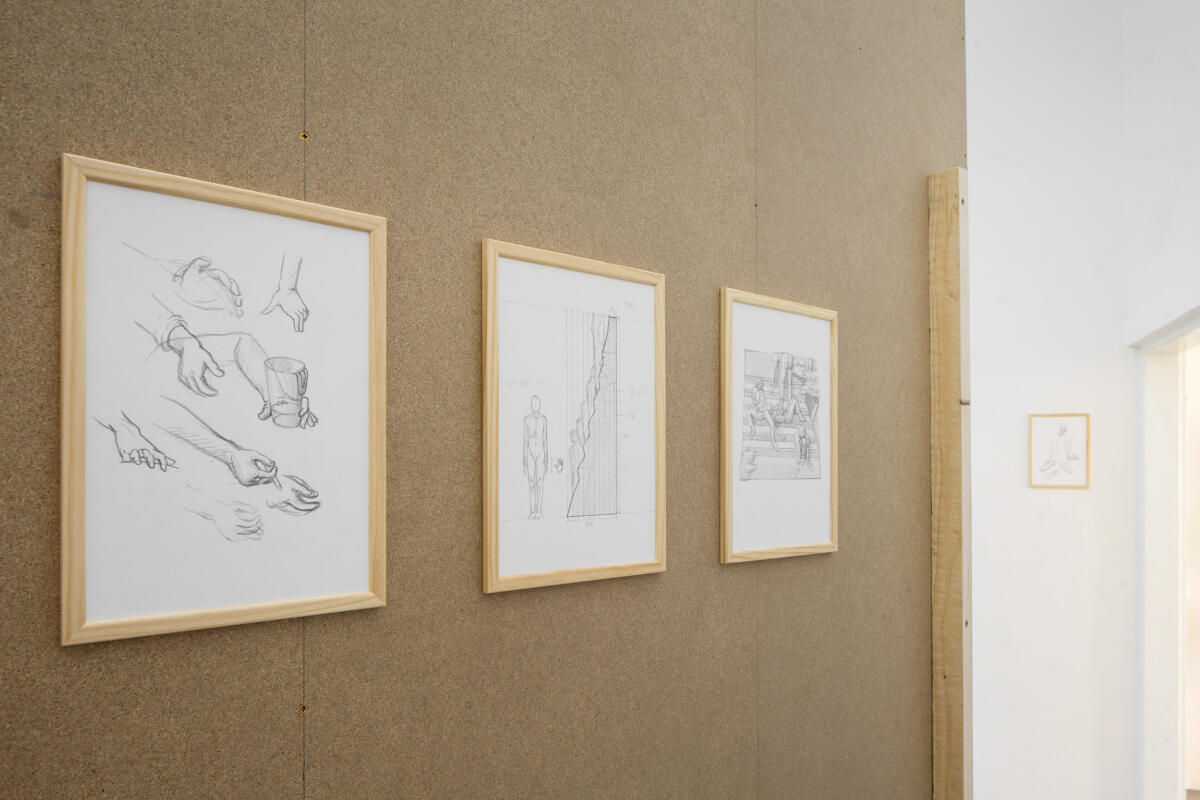
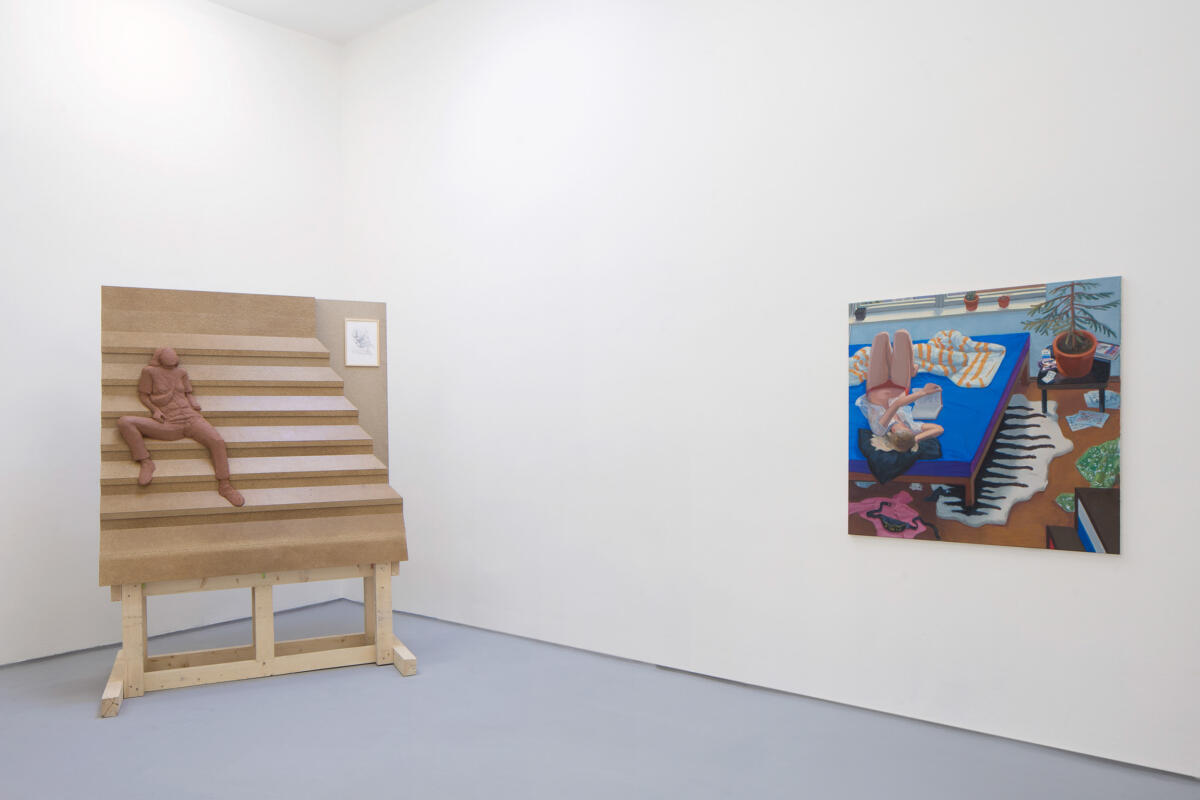
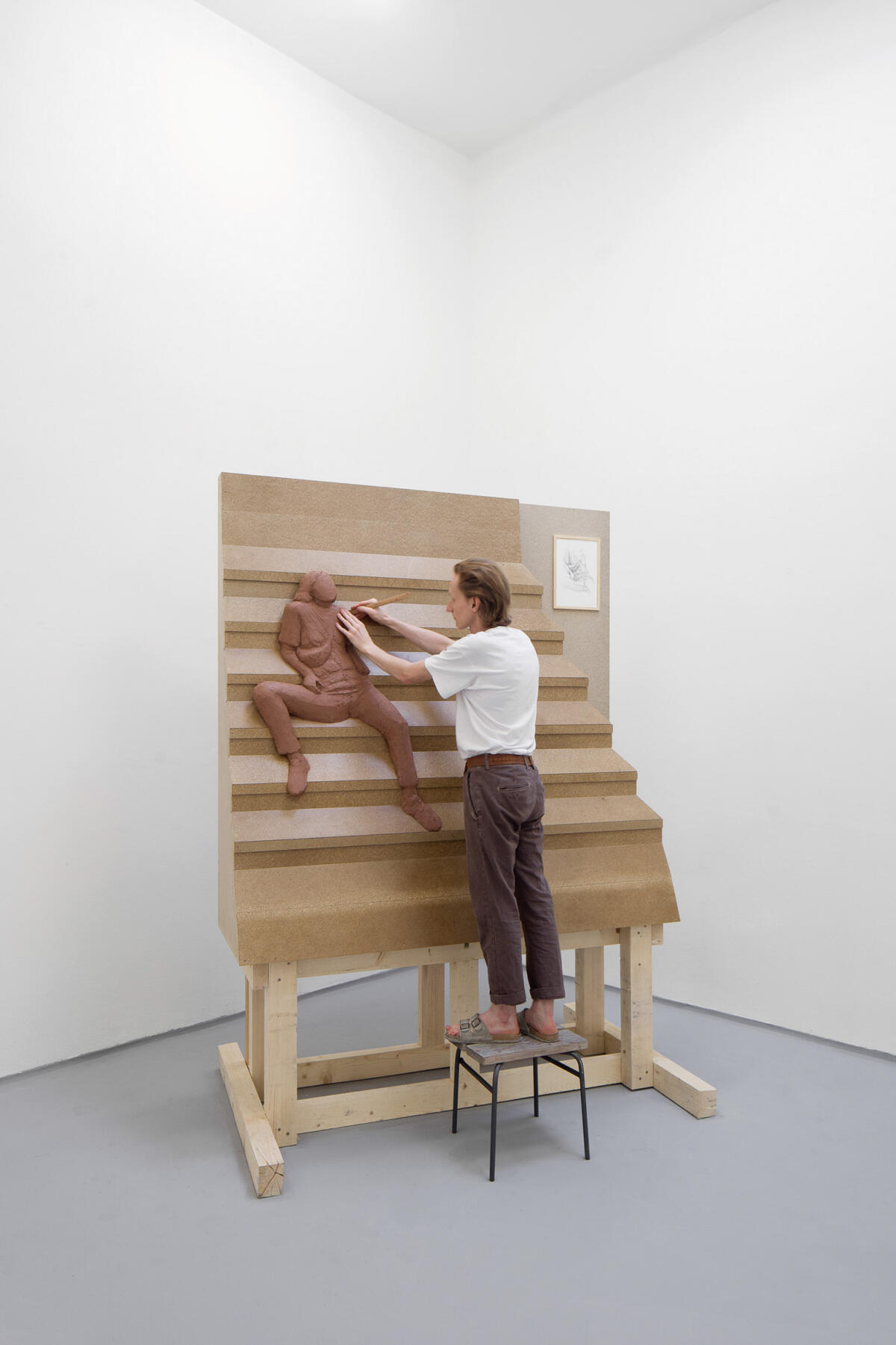
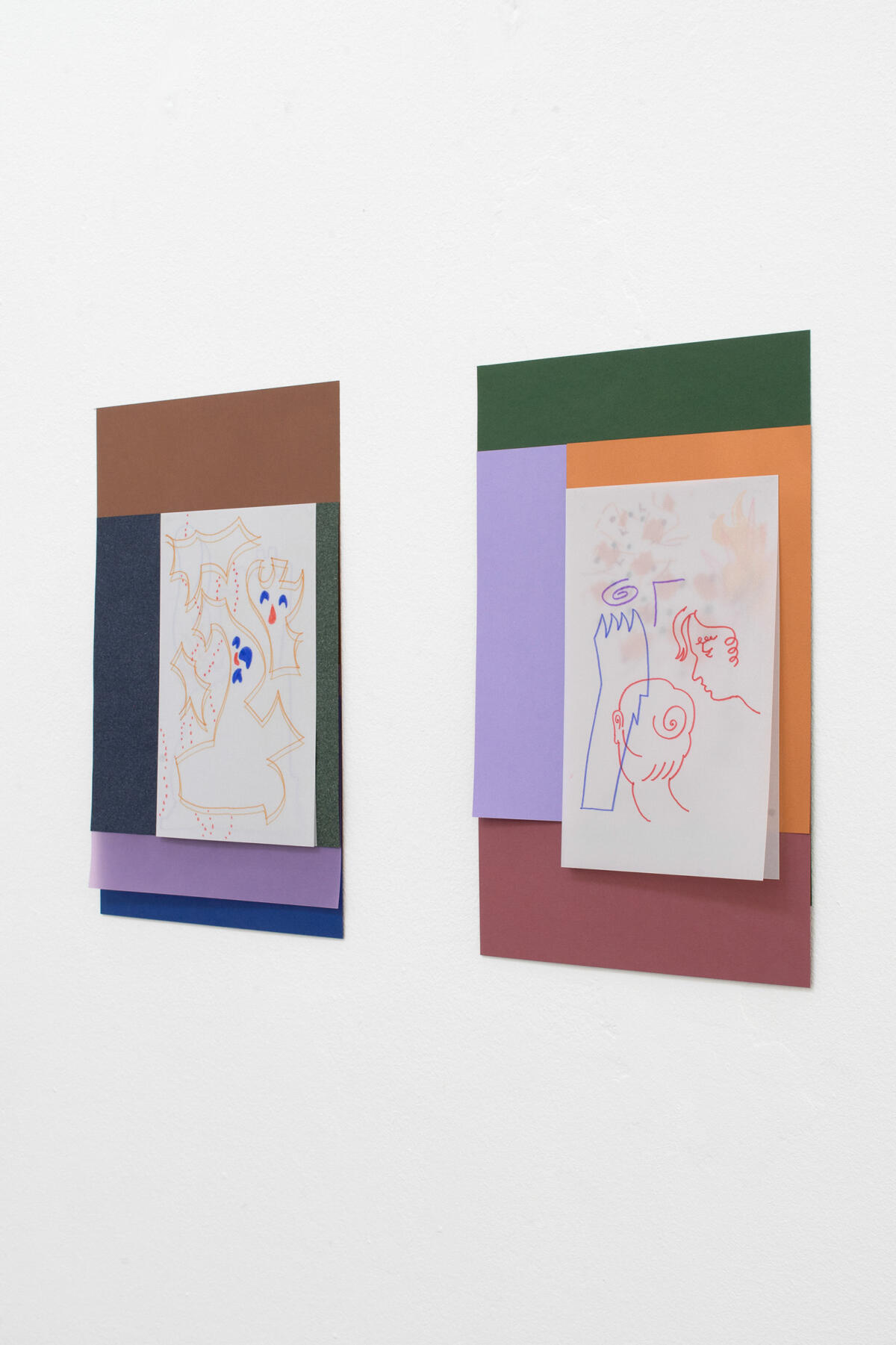
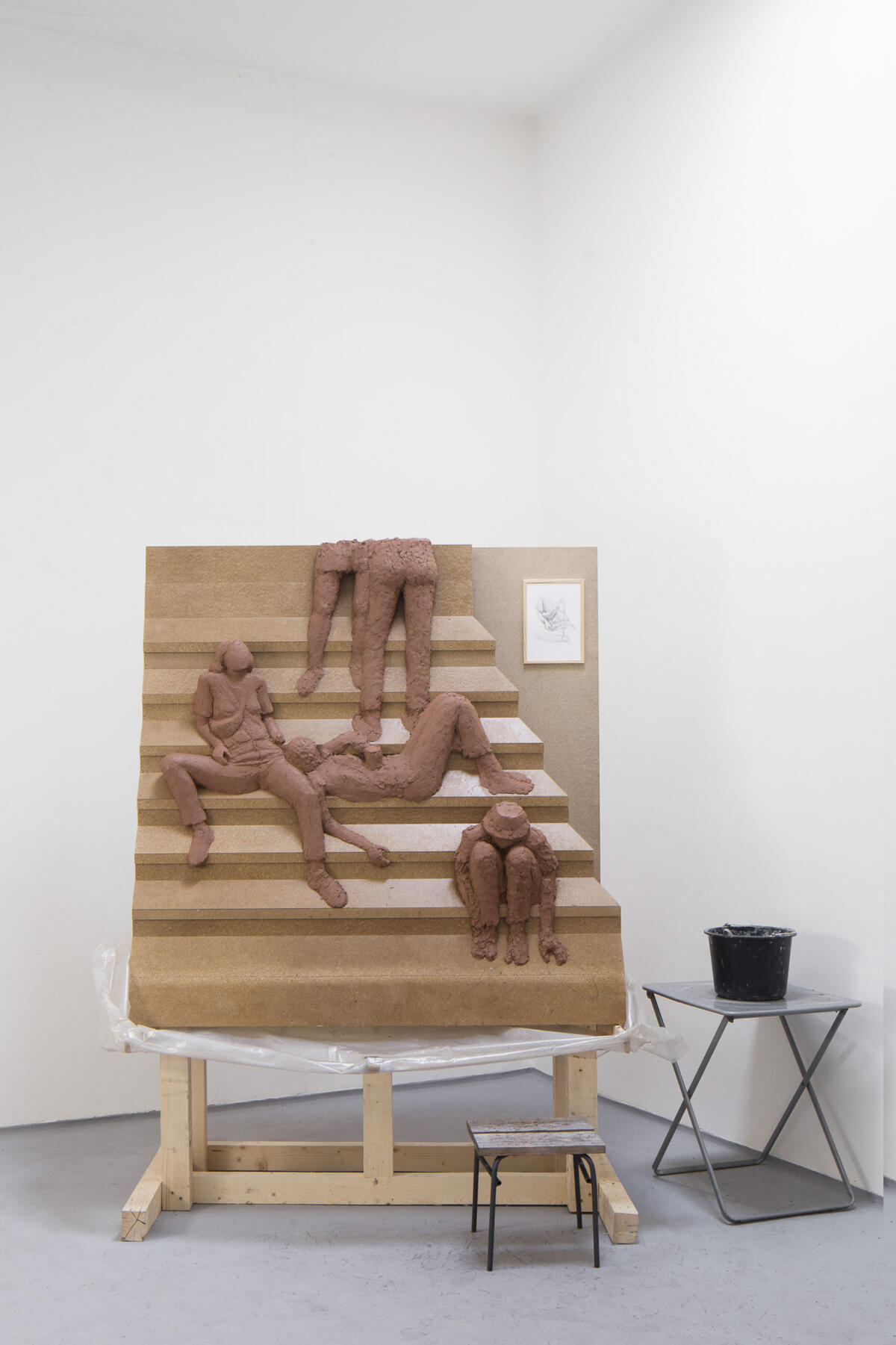
[CZ]
text: Jiří Ptáček
Zdá se, že výstavě Jana Kostohryze svědčí závěr léta, kdy více než kdy jindy nastavujeme tvář paprskům babího slunce, zatímco voda v řece začíná být ke koupání nevhodně chladná. Kdyby se konala o měsíc dříve, vstoupila by do každý rok o stupeň více rozžhavených ulic města, kde paralelně odpočítáváme čas do rakoviny kůže a konce světa, jak ho známe. Naopak v zimě by na sebe nejspíše příliš upozorňovala jako protiklad toho, co nás čeká venku. Prosluněnost výjevů se zdánlivě nečinnými mladými lidí, tolik jim záviděná těmi, co podle vlastních slov už mají povinnosti, ale také nonkonformnost, s níž se pružně protahují a nestoudně rozvalují, kde se jim namane, jsou při pohledu z pozdně letní perspektivy již pouze dílkem vzpomínek – ještě ale živých a prudce sentimentálních.
Idylický obraz, který Jan Kostohryz vytváří, lze pozorovat na křivkách těl zobrazených chlapců a dívek stejně jako ve opojně snadném vlnění fixů na jeho kresbách. Snad jen ta vosa z názvu usedá na okraj kelímku coby narušitelka – drobná piha na kráse decentně vylíčené rozkoše. Možná i jako symbol přízraku, který na nás dotírá i v těch všednodenní problémů nejvzdálenějších chvílích. Reliéf, který bude vznikat v průběhu výstavy jako postupně se vynořující detail jakési radostné únavy, kdy opět není nic lepšího, než vystavit se dobíjející záři slunce, je na výstavě od počátku přítomný v přípravných skicách. Avšak ta vosa tam někde bude, schovaná a nepostřehnutelná, jen ji vypít.
Kostohryzovy reliéfy vstřebaly klasický kánon, jenž od antiky prosakuje evropskou historií v rozličných znovuzrozeních a kolektivních i individuálních obrodách. Právě proto dobová aktualizace, jíž Kostohryz do povědomých šablon vkládá, má protějšek v tendenci ke dvojímu úniku mimo čas. Jeden jako by vyplýval z jakési dílčí podobnosti s malbou na amfóře, na níž se Iáson se svými kumpány povalují po palubě Argó poté, co se za příjemného vánku vykoupali v prohřátém moři. Pokud tedy nějaká taková existuje. Ta druhá vyplývá ze samotného charakteru činností, které jsou chlapci a dívkami vykonávány, považovaných pouze za pauzu mezi praktičtějšími úkony. Vždyť i jádrem slova prázdniny je prázdno, ne-čas jednoznačně oddělený od času práce, úkolů a výkonů, a v současnosti vyhrazený již pouze těm, o jejichž dospělosti ještě smíme být na vážkách.
Imprint
| Artist | Jan Kostohryz |
| Exhibition | Wasp in a Cup |
| Place / venue | Karlin Studios, Prague, Czechia |
| Dates | 9 September – 4 October 2020 |
| Website | futuraprague.com |
| Index | Centre for Contemporary Art FUTURA Jan Kostohryz Jiří Ptáček Karlin Studios |

